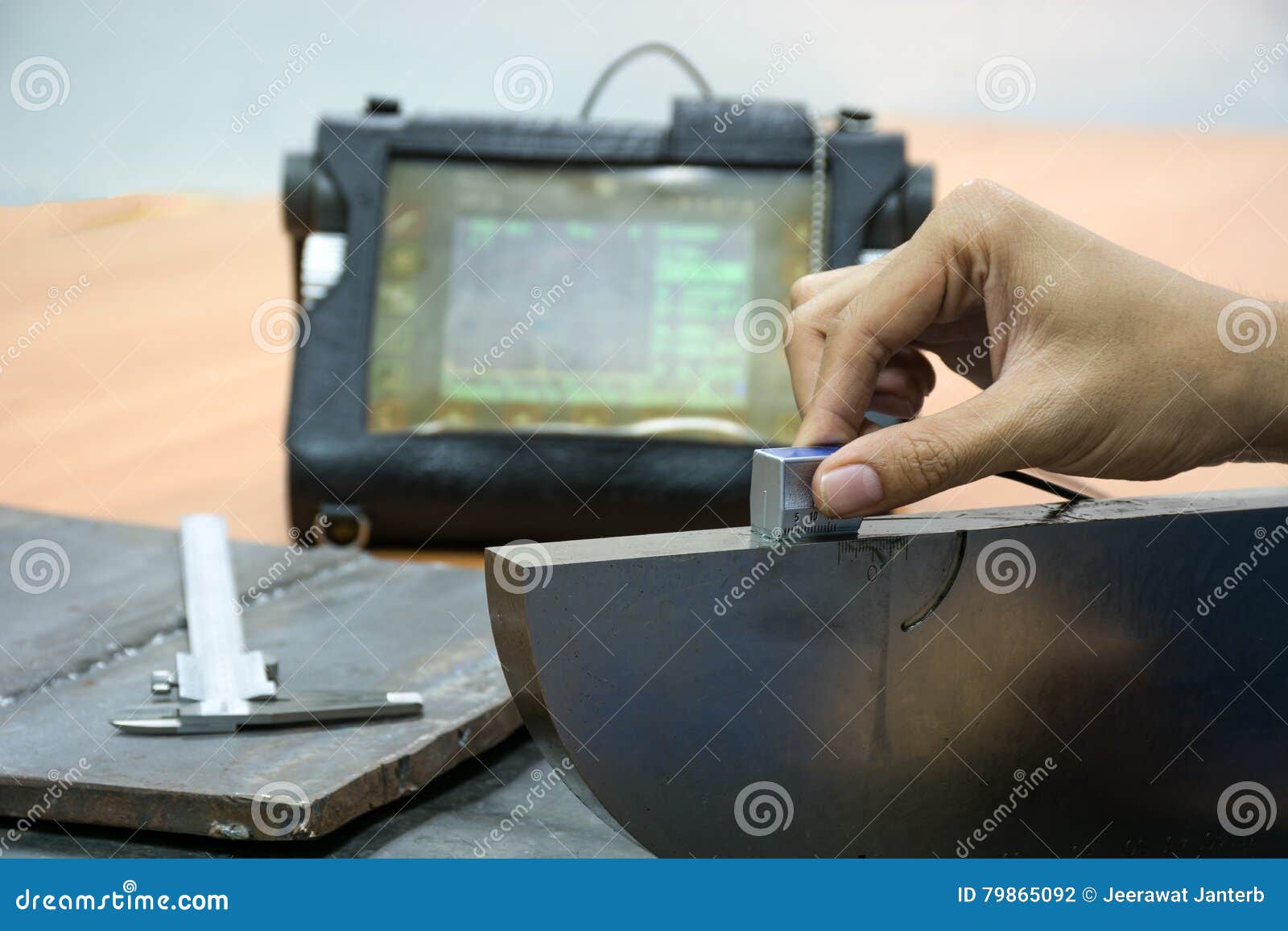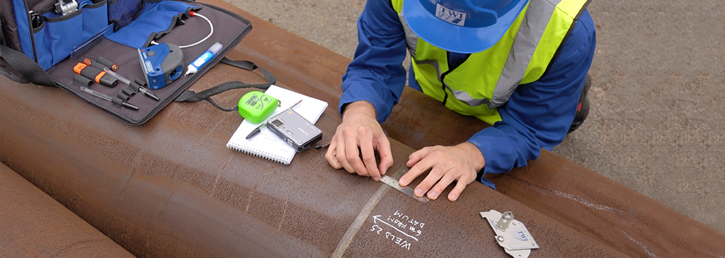How Regular Welding Inspection Madison Can Conserve You Money And Time
How Regular Welding Inspection Madison Can Conserve You Money And Time
Blog Article
Exploring Advanced Tools and Approaches for Accurate Welding Assessment
In the world of welding examination, the pursuit of accuracy and integrity is paramount, spurring the development of advanced tools and methodologies. Technologies such as phased array ultrasonic testing and digital radiography are transforming flaw detection, offering unequaled precision in characterizing welding defects. Furthermore, laser scanning developments and automatic evaluation systems, geared up with artificial knowledge, are redefining the landscape by minimizing human error and enhancing safety measures. As these sophisticated methods remain to advance, they guarantee not only to change evaluation techniques however also to elevate interesting inquiries about the future of top quality assurance in commercial applications.
Ultrasonic Testing Technologies
Ultrasonic testing advancements regularly stand for the center of developments in welding evaluation innovations. These advancements have actually dramatically boosted the capacity to spot and assess interruptions within bonded frameworks, ensuring boosted honesty and safety and security.

In addition, improvements in software program algorithms for information evaluation have enhanced the precision of problem discovery and sizing. Automated ultrasonic screening systems now use high-resolution imaging, making it possible for comprehensive analyses of weld quality. These systems are commonly incorporated with advanced visualization tools, which assist in the analysis of results.
Radiographic Assessment Techniques
While ultrasonic testing technologies have set a high requirement in non-destructive assessment, radiographic examination techniques continue to play an important duty in welding inspection by providing special understandings right into product honesty. Radiographic screening (RT) employs the use of X-rays or gamma rays to penetrate materials, producing a radiograph that visually stands for the inner framework of a weld. This imaging capability is indispensable for finding subsurface issues such as porosity, incorporations, and cracks that may not be visible through surface inspections.
The process involves placing a radiation source on one side of the weld and a detector on the contrary side. Variants in product density and density impact the attenuation of the rays, producing a contrasting image that precisely marks imperfections. RT is specifically useful for evaluating complicated geometries and thick sections where various other approaches may fall short.
Regardless of its performance, radiographic assessment needs to be conducted with strict adherence to safety and security methods because of the dangerous nature of ionizing radiation. The analysis of radiographs needs experienced employees, as the top quality of the analysis directly impacts the dependability of the evaluation. Consequently, recurring developments in electronic radiography are improving image quality and interpretation performance, strengthening RT's critical function in ensuring weld top quality.
Laser Scanning Breakthroughs
Accepting laser scanning modern technology in welding inspection has transformed the evaluation of weld high quality and stability. Unlike typical inspection techniques, laser scanning offers fast information acquisition, substantially boosting the effectiveness and precision of weld examinations.
Laser scanning breakthroughs have actually caused considerable enhancements in defining and finding surface area defects such as porosity, lack of fusion, and damages. The high-resolution information enables inspectors to execute thorough evaluations, guaranteeing that welds meet rigorous sector standards. Furthermore, this approach sustains the development of electronic records, helping with long-term quality control and traceability.
In addition, laser scanning innovation integrates effortlessly with software application solutions created for automated defect my website detection and assessment. The resultant information can be quickly shared and evaluated, promoting collective decision-making procedures. As markets remain to demand greater standards for weld quality, laser scanning stays at the forefront, using unequaled precision and effectiveness in welding inspection.
Automated Assessment Systems

Automated assessment systems supply the benefit of uniformity, eliminating human mistake and subjectivity from the inspection procedure. They are made to operate in various environments, from production floorings to remote field websites, guaranteeing extensive coverage. Welding Inspection Madison. These systems can be set to follow certain welding standards and standards, supplying comprehensive records and documentation for quality assurance purposes
Moreover, the combination of cloud-based platforms helps with the storage space and analysis of large amounts i was reading this of examination information. This enables fad evaluation and anticipating maintenance, allowing makers to attend to prospective concerns prior to they escalate. The adoption of automatic examination systems is a crucial relocation in the direction of enhancing the integrity and performance of welding procedures in industrial applications.

Enhancing Safety and Performance
A substantial element of boosting safety and effectiveness in welding assessment hinges on the combination of ingenious innovations that simplify procedures and mitigate dangers. The adoption of sophisticated non-destructive screening (NDT) approaches, such as ultrasonic testing, phased range ultrasonic testing (PAUT), and radiographic screening, plays an essential role in making sure structural stability without compromising the security of the employees involved. These techniques enable comprehensive inspections with very little downtime, reducing possible threats connected with traditional techniques.
Additionally, the application of real-time information analytics and artificial intelligence formulas has transformed the way assessment information is translated. By utilizing predictive analytics, potential defects can be identified prior to they materialize right into crucial failures, guaranteeing timely interventions and maintenance. This proactive strategy considerably improves functional effectiveness and safety and security in welding processes.
Moreover, remote examination innovations, consisting of drones and robotic spiders outfitted with high-resolution video cameras, make it possible for inspectors to evaluate hard-to-reach areas without subjecting them to dangerous problems. This not only boosts inspection precision but additionally reduces human danger. By leveraging these advanced devices and techniques, markets can accomplish greater safety and security requirements and operational performance, inevitably resulting in even more trustworthy and lasting welding assessment methods.
Final Thought
The integration of advanced tools and approaches in welding inspection dramatically boosts flaw discovery and makes sure architectural stability. Welding Inspection Madison. Developments such as phased variety ultrasonic testing, electronic radiography, and laser scanning enhance flaw characterization, while automated assessment systems and AI reduce human mistake. Remote modern technologies assist in secure evaluations in unsafe environments, advertising a positive upkeep technique. These developments not just boost inspection effectiveness however also add to enhanced security and quality control in industrial welding applications.

Ultrasonic screening developments frequently represent the leading edge of improvements in welding examination technologies.While ultrasonic screening developments have actually established a high standard in non-destructive examination, radiographic evaluation strategies proceed try this site to play an indispensable function in welding examination by offering unique understandings right into material stability.Welcoming laser scanning modern technology in welding inspection has actually revolutionized the evaluation of weld quality and honesty. As sectors proceed to require greater standards for weld high quality, laser scanning stays at the forefront, offering unequaled accuracy and effectiveness in welding examination.
Automated inspection systems offer the benefit of uniformity, getting rid of human error and subjectivity from the examination process.
Report this page